 |
||||
| Free Shipping! |
 |
||||
| Free Shipping! |
|
The Case for this Sextant can be Fitted with a Custom Engraved Brass Plaque |
|---|
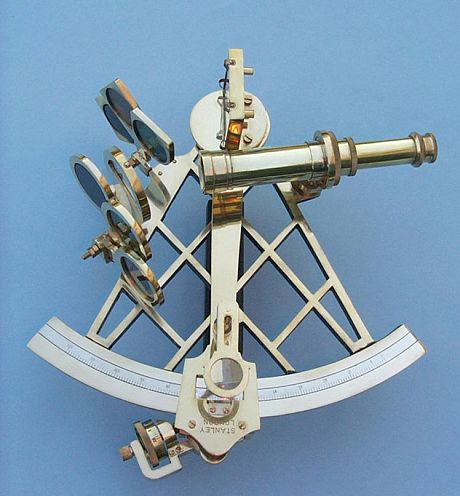
|
The 8-inch (20 cm) radius sextant reproduction is our largest and finest 8-inch sextant. It has six filters, a scale magnifier, and a micrometer drum readout. The sextant weighs 5 pounds (2.3 kg), measures 11 3/8 inches (28.9 cm) tall, 10 1/2 inches (26.7 cm) wide, and is 4 7/8 inches (12.4 cm) deep. |
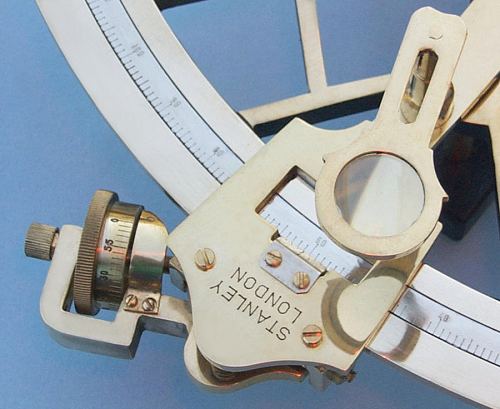
|
| The sextant features a worm gear drive that can be overridden for large angular movements. A micrometer drum mechanism is used to precisely change and read the azimuth angle. Squeezing the mechanism disengages the gearing for smooth, large angle moves. This photograph also shows the Stanley London engraving. |
|
The 8-inch sextant has six filters mounted on heavy swing-arm mounts.
The telescope produces a bright clear image, and can be extended to focus and collapsed for storage.
|
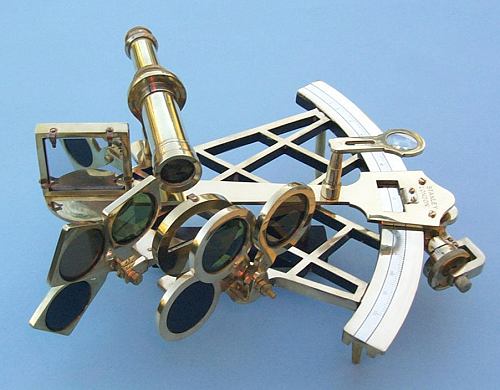
|
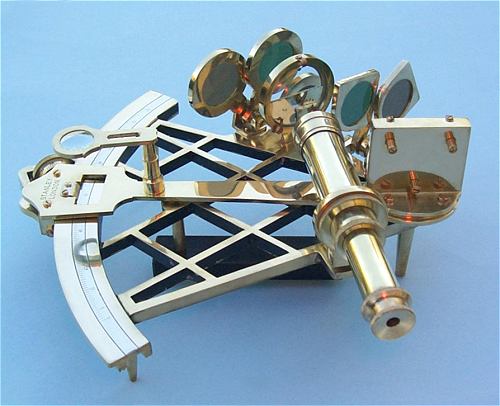
|
The index mirror has three inset adjustments to align the optical path. The mirrors are aligned at the factory and checked prior to shipping. |
| When the sextant is set to zero degrees, the image through both optical paths as viewed through the telescope, align to produce a single image. Moving the index arm causes the image to split in half. When viewing two objects, such as the horizon and a celestial body, the index arm is adjusted until the two are superimposed. The micrometer drum reads out the angle between the two objects. | |
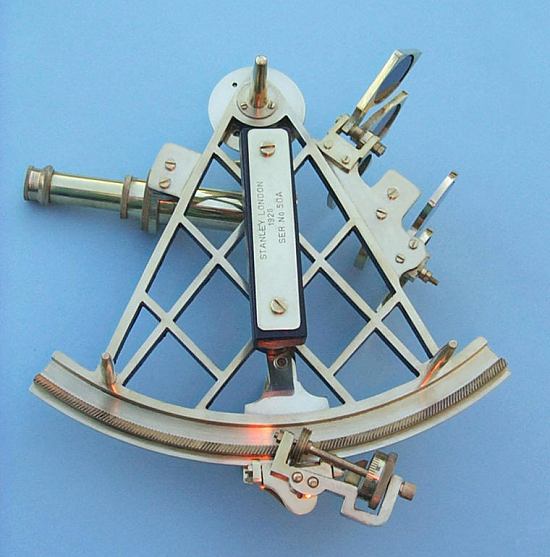
|
|
The micrometer rack is cut directly onto the limb of the sextant. The sextant's handle is made of hardwood with a brass plaque. Custom engraving on the brass plaque is available. |
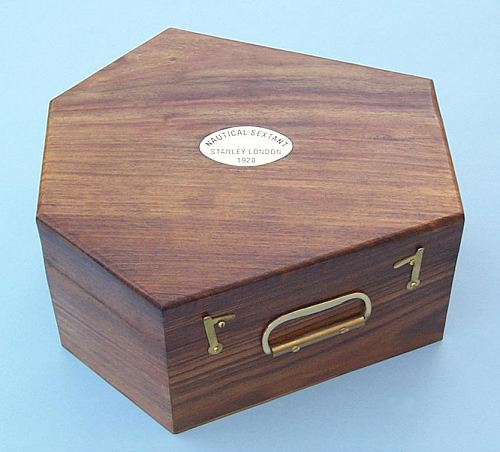
|
A beautiful large handcrafted hardwood storage and display case is included with the purchase of the sextant. The case has two brass latches and a handle, and is lined with green felt. An oval brass plaque on the top of the case is engraved "Nautical Sextant, Stanley London, 1920." |
|
The 8-inch sextant can be either stored or displayed inside its handsome handmade
hardwood case. The sextant is fully functional, but has not been calibrated and is not intended for navigation. A nearly identical vernier readout version of this sextant is available. The only difference between these sextants is the micrometer drum vs. vernier readouts on the index arm. The micrometer drum represents the design of modern sextants and the vernier readout version is found in older designs. |
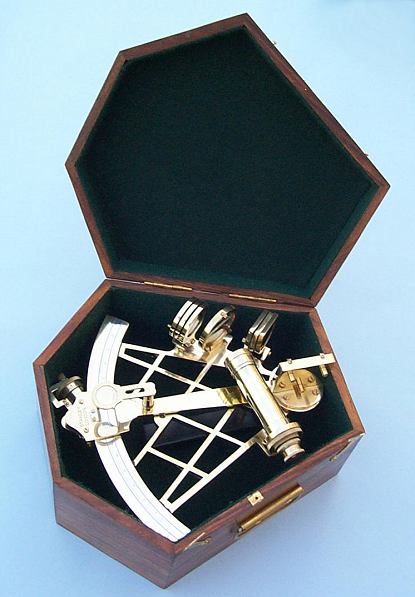
|
 |

|
 |
|
 |
 |
 |
 |
 |
 |